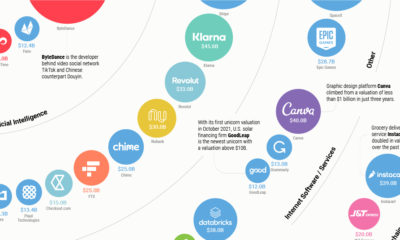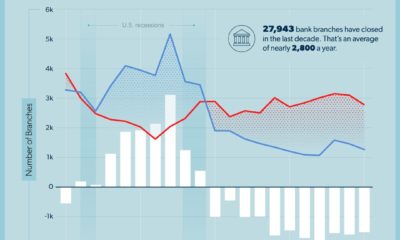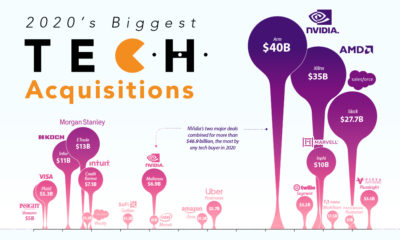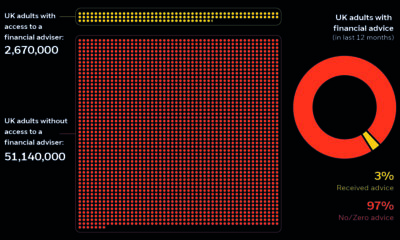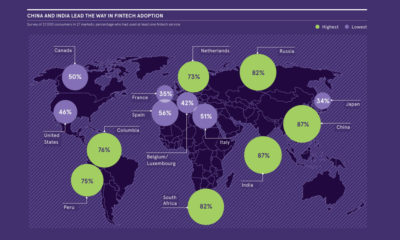This one statistic sums it up: in 2015, a record amount of fintech deals were done for a total deal value of $24.6 billion. That number is higher than the last five years put together. With everything seemingly turning up “fintech”, here is a summary and some reflection on the 10 biggest fintech deals of last year.
Summing Up the Biggest Fintech Deals of 2015
- FIS acquires SunGard for $9.1 billion The acquisition, financed with a mix of 45 percent cash and 55 percent stock, yields a combined company with $9.2 billion in annual revenue, 55,000 employees, and operations in more than 130 countries. Headquartered in Jacksonville, Florida, FIS is the world’s largest global provider dedicated to banking and payments technologies. Their technology underscores $9 trillion in global transactions each year. SunGard, which was the target of the acquisition, was previously taken over in 2005 by a consortium of private equity firms in the largest tech privatization deal ever. It was valued at $11.3 billion.
- ICE acquires Interactive Data Corp Intercontinental Exchange (ICE) bought Interactive Data Corporation (IDC) from private equity firms Silver Lake Group LLC and Warburg Pincus LLC. Valued at $5.2 billion, including $3.65 billion in cash and $1.55 billion in stock, the deal allows ICE to expand the markets it serves while bringing in new technology platforms and data services. ICE owns and operates 23 exchanges and marketplaces, with the most famous of these being the New York Stock Exchange (NYSE).
- McGraw-Hill Financial acquires SNL Financial McGraw-Hill Financial, the parent of the Standard & Poor’s ratings agency, paid $2.23 billion in cash to buy SNL Financial from private equity firm New Mountain Capital. McGraw-Hill is also known for some of its other subsidiaries, such as S&P Dow Jones Indices and Platts.
- D+H Corporation buys Fundtech D+H, a Canadian corporation which was historically a manufacturer of cheques, has recently shifted its focus on more technology-related endeavors. Part of this includes buying global payment services provider Fundtech for $1.25 billion in cash. In a recent press release, D+H described the transaction as a key piece in their transition to technology: “The Fundtech acquisition significantly advanced D+H in our FinTech journey and was evidence of our commitment to continue providing clients the innovative solutions they need to grow and compete.”
- Lufax is funded by multiple investors Lufax, also known as the Shanghai Lujiazui International Financial Asset Exchange Co., is an online Internet finance marketplace in China. Focusing on peer-to-peer loans, Lufax connects individual investors with borrowers for loans of around $10,000 while collecting a 4% fee off each loan. Domestic and overseas institutions participated in the most recent $1.2 billion financing in December, including the investment arm of COFCO Group and Guotai Junan (Hong Kong). The company is considered a mover and shaker in the Chinese lending space, and is now valued at $18.5 billion.
- Lufax is funded by multiple investors Lufax was also responsible for the sixth biggest deal of 2015, as it did an earlier raise in March 2015 for $488 million from a group of investors at a valuation of nearly $10 billion.
- Markit Markit, which recently announced a merger with IHS to create a data heavyweight, was also very active last year. In 2015, it initiated a secondary public offering of its common shares to investors worth $350 million.
- Learnvest acquired by Northwestern Mutual Northwestern Mutual went all-in on personalized financial planning by buying New York-based startup LearnVest for over $250 million.
- Neustar acquires TNS Real-time information services provider Neustar bought caller authentication assets from Transaction Network Services (TNS), an affiliate of Siris Capital Group, for $220 million in cash.
- Markit buys CoreOne Earlier in 2015, market data company Markit bought CoreOne Technologies, a global leading provider of regulatory reporting for $200 million. Original graphic by: Raconteur on But fast forward to the end of last week, and SVB was shuttered by regulators after a panic-induced bank run. So, how exactly did this happen? We dig in below.
Road to a Bank Run
SVB and its customers generally thrived during the low interest rate era, but as rates rose, SVB found itself more exposed to risk than a typical bank. Even so, at the end of 2022, the bank’s balance sheet showed no cause for alarm.
As well, the bank was viewed positively in a number of places. Most Wall Street analyst ratings were overwhelmingly positive on the bank’s stock, and Forbes had just added the bank to its Financial All-Stars list. Outward signs of trouble emerged on Wednesday, March 8th, when SVB surprised investors with news that the bank needed to raise more than $2 billion to shore up its balance sheet. The reaction from prominent venture capitalists was not positive, with Coatue Management, Union Square Ventures, and Peter Thiel’s Founders Fund moving to limit exposure to the 40-year-old bank. The influence of these firms is believed to have added fuel to the fire, and a bank run ensued. Also influencing decision making was the fact that SVB had the highest percentage of uninsured domestic deposits of all big banks. These totaled nearly $152 billion, or about 97% of all deposits. By the end of the day, customers had tried to withdraw $42 billion in deposits.
What Triggered the SVB Collapse?
While the collapse of SVB took place over the course of 44 hours, its roots trace back to the early pandemic years. In 2021, U.S. venture capital-backed companies raised a record $330 billion—double the amount seen in 2020. At the time, interest rates were at rock-bottom levels to help buoy the economy. Matt Levine sums up the situation well: “When interest rates are low everywhere, a dollar in 20 years is about as good as a dollar today, so a startup whose business model is “we will lose money for a decade building artificial intelligence, and then rake in lots of money in the far future” sounds pretty good. When interest rates are higher, a dollar today is better than a dollar tomorrow, so investors want cash flows. When interest rates were low for a long time, and suddenly become high, all the money that was rushing to your customers is suddenly cut off.” Source: Pitchbook Why is this important? During this time, SVB received billions of dollars from these venture-backed clients. In one year alone, their deposits increased 100%. They took these funds and invested them in longer-term bonds. As a result, this created a dangerous trap as the company expected rates would remain low. During this time, SVB invested in bonds at the top of the market. As interest rates rose higher and bond prices declined, SVB started taking major losses on their long-term bond holdings.
Losses Fueling a Liquidity Crunch
When SVB reported its fourth quarter results in early 2023, Moody’s Investor Service, a credit rating agency took notice. In early March, it said that SVB was at high risk for a downgrade due to its significant unrealized losses. In response, SVB looked to sell $2 billion of its investments at a loss to help boost liquidity for its struggling balance sheet. Soon, more hedge funds and venture investors realized SVB could be on thin ice. Depositors withdrew funds in droves, spurring a liquidity squeeze and prompting California regulators and the FDIC to step in and shut down the bank.
What Happens Now?
While much of SVB’s activity was focused on the tech sector, the bank’s shocking collapse has rattled a financial sector that is already on edge.
The four biggest U.S. banks lost a combined $52 billion the day before the SVB collapse. On Friday, other banking stocks saw double-digit drops, including Signature Bank (-23%), First Republic (-15%), and Silvergate Capital (-11%).
Source: Morningstar Direct. *Represents March 9 data, trading halted on March 10.
When the dust settles, it’s hard to predict the ripple effects that will emerge from this dramatic event. For investors, the Secretary of the Treasury Janet Yellen announced confidence in the banking system remaining resilient, noting that regulators have the proper tools in response to the issue.
But others have seen trouble brewing as far back as 2020 (or earlier) when commercial banking assets were skyrocketing and banks were buying bonds when rates were low.
